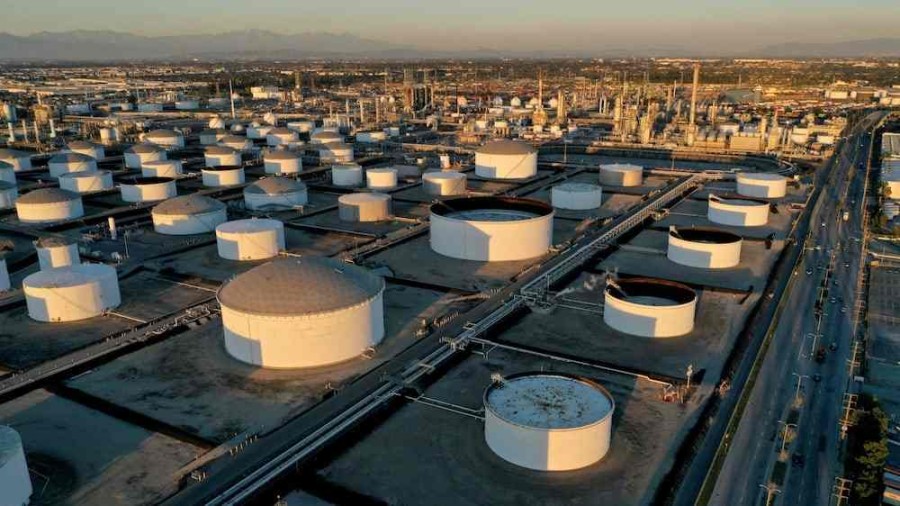EIA Predicts Global Crude Supply Deficit in 2025 Amid Opec+ Cuts

collected
Global demand for crude is projected to exceed supply next year as Opec+ extends some of its deep production cuts into 2025, according to the US Energy Information Administration (EIA).
Global crude demand is set to surpass supply in 2025 as OPEC+ extends production cuts, forecasts the US EIA. Oil consumption for 2025 is revised up to 104.7 million bpd, while production is projected at 104.6 million bpd. OPEC+ cuts are driving inventory declines, with Brent expected to average $89/barrel in H2 2024 amid tightening supplies.
The statistical arm of the US Department of Energy, on Tuesday raised its forecast for global oil consumption for next year to 104.7 million barrels per day from an earlier estimate of 104.5 million bpd.
Crude production worldwide is now projected to reach 104.6 million bpd, down from a previous forecast of 104.7 million bpd, the agency said in its Short-Term Energy Outlook.
“Inventory withdrawals stem in part from Opec+ production cuts, which the group announced in early June would remain at current levels until at least the end of September,” it added.
Last month, Opec+ agreed to extend output cuts of 3.66 million bpd, which were initially planned to end this year, until the end of 2025.
At the same time, the additional 2.2 million bpd voluntary production cuts of eight Opec+ member states were extended by three months until the end of September.
The group also released a plan for gradually unwinding the voluntary curbs on a monthly basis from October 2024 until September 2025, but said that “the monthly increases can be paused or reversed subject to market conditions”.
Opec will release its monthly oil market report later on Wednesday.
For this year, the EIA expects crude oil demand to be 102.9 million bpd, compared to a supply of 102.4 million bpd.
Brent, the benchmark for two thirds of the world’s oil, will average $89 a barrel in the second half of 2024, up from $84 a barrel in the first half of the year, the agency said.
“Higher prices in the second half of the year result from our forecast of persistent withdrawals from global oil inventories,” it added.
The international benchmark was trading 0.64 per cent lower at $84.12 a barrel at 10.09am UAE time on Wednesday.
Last week, oil prices marked their fourth consecutive week of gains, driven by strong fuel demand and tightening supply.
Opec crude exports fell to 18.1 million bpd in June, a decrease of more than 1.6 million bpd month-over-month, marking the lowest crude export level since June 2021, UBS said last week, citing estimates from tanker tracking company Petro-Logistics.
Nearly all Opec members recorded a drop in exports last month, with large declines in Saudi Arabia, Iran, the UAE and Kuwait, the Swiss lender said.
Meanwhile, geopolitical tensions in the Middle East, driven by Israel-Hamas war, Hezbollah’s escalating military skirmishes with Israel, as well as the actions of the Houthis in the Red Sea, are causing an increase in oil prices due to added risk, analysts said.
Recent escalations in the Middle East are reintroducing a risk premium to oil prices, which we “had not seen for a few weeks,” Rystad Energy said in a research note on Tuesday.
Source: https://www.thenationalnews.com
Previous Story
- Global Skincare Market Sees Surge in Natural and...
- Global Demand for Forest Machinery Parts Surges Amidst...
- Industrial Textile Machinery - Key to Success in...
- Insights into Global Ferrous Metal Suppliers and Market...
- China's president arrives in Europe to reinvigorate ties...
- Insights into Global Rice Supplier Industry Trends
- Japan's 7-Eleven convenience chain targets aggressive global growth
- Global economy improving but challenges persist, G24 says